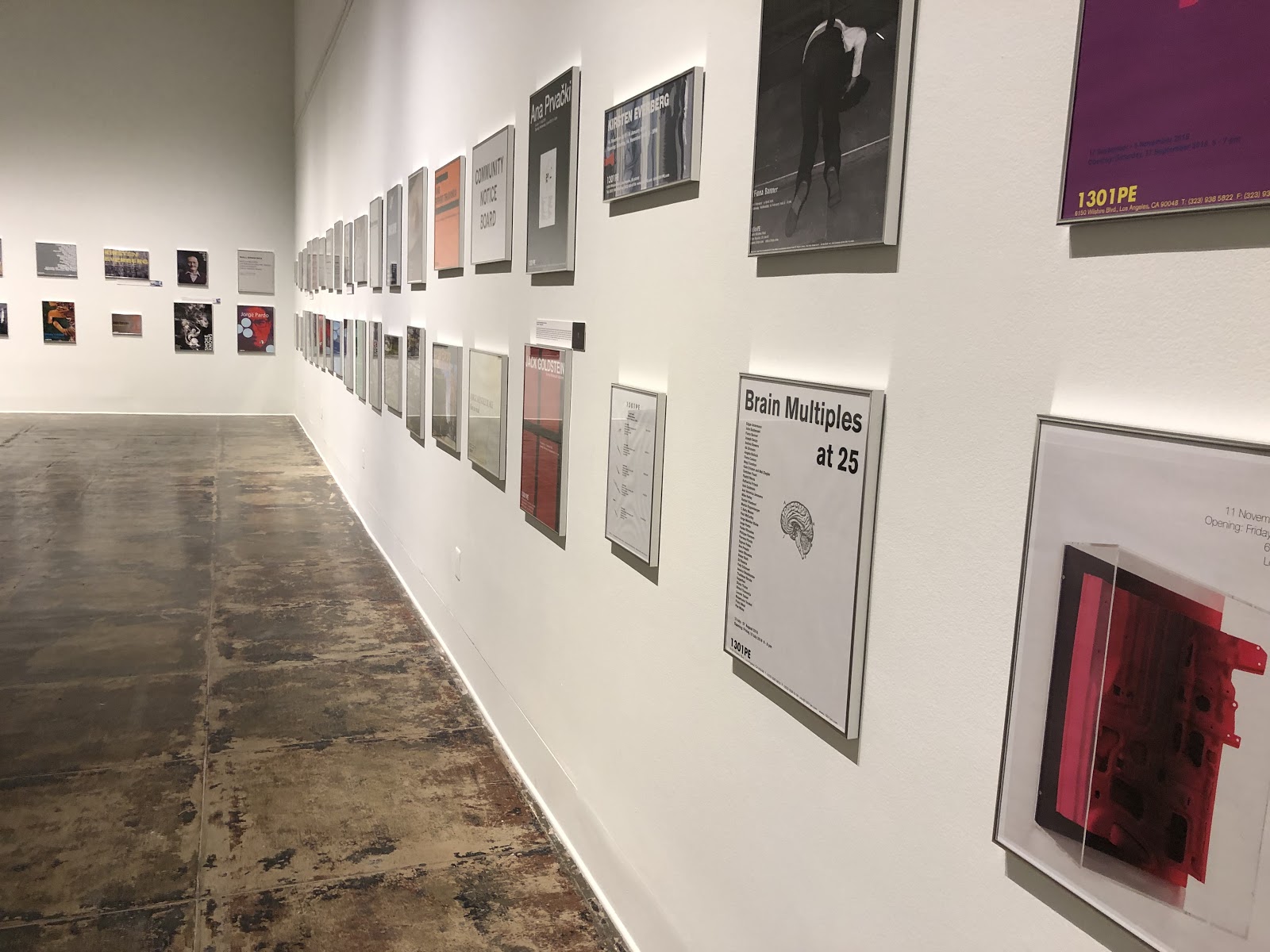Since the Los Angeles art gallery 1301PE opened in 1992, its founder Brian Butler has presented the work of a number of internationally renowned artists, including John Baldessari, Fiona Banner, Diana Thater, Kirsten Everberg, Pae White, SUPERFLEX and Uta Barth. Stanford Art Gallery’s latest exhibition, “Here Today,” displays a complete history of 1301PE’s work from the past 25 years. The exhibition is open from July 23 to Aug. 30.
The Daily sat down with Butler to discuss his work, collaborating with other artists and the impact of poster art on the Stanford community.
The Stanford Daily (TSD): How did you first get into poster art?
Brian Butler (BB): As a kid growing up, I would play my vinyl record, look at the album cover art, pull out the poster of the band I liked and put it up on my wall. Then there was this [San Francisco rock poster purveyor] named Ben Friedman who used to sell concert posters from music venues like Winterland and Fillmore West. He had all of these posters that my brother and I would stop and look at—which were made by amazing graphic artists. I think [my childhood hobbies], and looking at art history, and the fact that I really liked the idea of ephemera, which are art forms, like posters, that aren’t precious, and can only be enjoyed for a brief amount of time, had an influence on me.
TSD: Why did you choose LA as the location for your gallery?
BB: After I left Berkeley, I moved to London, then back to LA, then to Cologne, Germany. While I was in Cologne, I was working for a gallery that was based in LA, I came back to LA later on; there was an economic downturn, I lost my job, so I thought, “What am I going to do?” And since I really liked editions or multiples, I started a little company called Brain Multiples. In 1998, we moved to the space on Wilshire Boulevard. LA was natural to me because New York was too much about business, and I thought the LA was interesting—with the artists that were there in LA, and all these art schools, from UCLA to CalArts and Otis, and it was cheap living, so people just kind of congregated.
TSD: Do you consider poster art a form of contemporary art?
BB: The posters are just an offshoot of the gallery. And I always say this: [posters] are the art of our time. If it’s art of our time, we have no idea if it’s good, bad, or whatever. It’s just of our time. As soon as it becomes “contemporary,” then somehow we’re putting a label on it and giving it a value association. But the artists that I’ve worked with for a long time—Pae White, Diana Thater, Parreno/Pardo, or many of the artists that you’ll see in the posters in the Stanford Gallery—they’re all working, living artists who are just making [art], thinking about what they want to do, wanting to make an impact in this time.
TSD: Are the posters in the exhibition the original copies?
BB: They’re all original, with the exception of Diana Thater’s “Pink Daisy, Amber Room” exhibition posters. Those posters got wet and the edges stuck together because of a flood in our storage room.
TSD: Is there a certain formula that you apply for all of your posters?
BB: I’d say we don’t do anything other than maybe calculate a size. Artists sometimes ask me to do something and they’ll be like, “Oh no, I hate that typeface!” or “How could you possibly use that color?” So even though sometimes we have these discussions about [design], I let the artists make their own decisions for the most part.
TSD: What have you learned through collaborating with other artists?
BB: I think to be fearless and to trust your gut is the first thing. The idea is like, you know, you have a good time. I learned that working with the artists is about having a continuous conversation with people. It’s not just about the business of having a gallery, or what the exhibition is going to be, or what the work is going to be. For me, it’s communicating with the artists that allows an openness that expands one’s conversation from just being about what we’re selling, to a higher and more philosophical level of how or why we’re selling it.
TSD: What’s special about having poster art displayed in a setting like Stanford?
BB: When the library said they wanted to acquire them, I thought it would be really interesting to put it into an academic situation, because a totally different generation is looking at it. If students just go, “It’s horrible!” I’ll be like, “Oh, that’s interesting.” But if they’re like, “Wow, I’ve never thought of posters before,” then I’ll be like, “That’s pretty great!” Because Stanford was taking them, I thought that the Palo Alto population should be able to see them before they go into a drawer. What I really want at the end of all this is a class that’s taught in the graphic art department on poster making.
This transcript has been lightly edited and condensed.
This article and its headline have been corrected to reflect that 1301PE is an art gallery, not an art and poster gallery. The Daily regrets this error.
Contact Brian Lee at bl45983 ‘at’ pausd.us.
